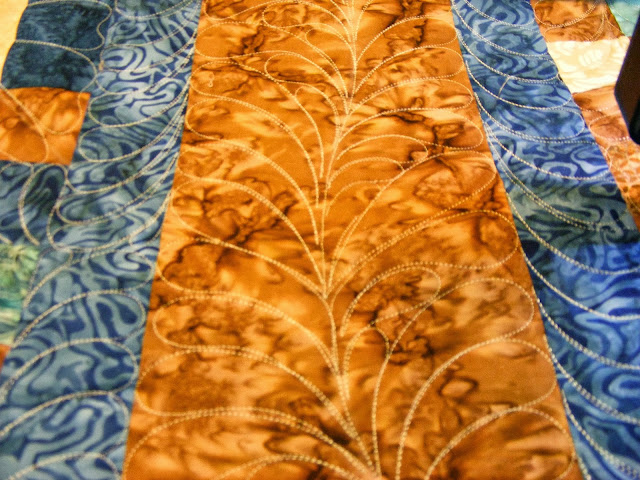The deer panel with checkerboard border
I have two young great nephews who are wild about deer. One tracks them with his Grandpa. The other has his room decorated in camoflauge. I saw the deer panel on the internet and ordered a number of them. The quilts are for young boys so I didn't want to do a lot of patchwork yet I wanted to make them special. I decided just to border them out and one border would be a checkerboard. The first quilt was made for my own son. And thankfully I wrote down what I had done.
\
I was going to do 1" finished sized squares for the checkerboard.. In order to have a checkerboard go all the way around and not have two same color squares next to each other on the corner,
one side must be an even number of patches and the adjacent side must be an odd number of patches. My patches are an inch so that makes it easy. I didn't want to cut the panel any smaller than I had to but I did cut it to an full inch measurement plus the 1/2" seam allowance. If one side is an even number and the other is odd, you are golden. But if they are both even or both odd, or you can not get a full inch finished measurement, use the next border to fudge this.
My panel when squared up measured 35 1/2" x 43 1/2" with seams included. Both odd. To do the math for the next border I used the finished size which would be 35" x 43", the finished measurement. I decided to keep my side measurement as the uneven. I would sew a 2" finished border actually cutting 2 1/2" with seams.
I would account for my need to have one side an even number with the top and bottom borders.. I wanted to have the bottom and top border add about 6" each to the length of the quilt. My length of the panel was 43" I needed to an extra inch to make it an even number. to accomplish this that would be a half inch to each of the two borders making an overall total of one inch. . I wanted my borders to each be at least six inches wide. Six inches plus the extra half inch to get that even number on the side is 6 1/2" for the Finished border Then I have to add my seam allowance making the measurement I will cut for my border cut 7". .
But even before I start the checkboard, I want another small border and will cut it 2 1/2 inches adding two inches to each side. The checkerboard will be the third border.
This is the start of the quilt with the panel with the first border on. The next border will be black and cut 2 1/2 inches wide cut measurement.
Next I have to figure out how many strips to cut for the one inch checkerboard three squares wide.
If I measure my quilt it is now 43 1/2" x 60 1/2". The finished size is 43 x 60 and that is what I will use to
I need to add all four sides to get the perimeter and then add 3" apiece for all four corners. Mine totals a length of checkerboard about 218 inches. My strips are about 40 inches wide and the segment for each checkerboard piece will be 1 1/2". That is about 26 from each strip set. So I need 9 strip sets Each strip set has 3 strips of fabric WOF x 1 1/2".
I need two different strip sets. One black, tan, black and one tan,black, tan. Sort of like when you do 9 patches. I will make 4 1/2 strips sets the WOF of one color combination and 4 1/2 of the other.color combination I will cut 14 1 1/2" by WOF strips from each color to get enough strips to make my strips sets. If there is no math error I will have little waste.
After that it is just a matter of putting on borders until I get as big as I want. For the one already made, I used 6" and 8" Finished Size. I cut 6 1/2 for the tan and 8 1/2 for the black with seam allowances added.. My ending measurement (if my math is correct is 94" x 77". And I should have two very happy great nephews.
After I ordered the panel off the internet and made the first quilt, I found the panels at Walmart. If I hadn't had free shipping, I would have been upset.

















